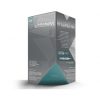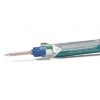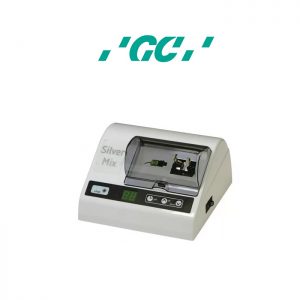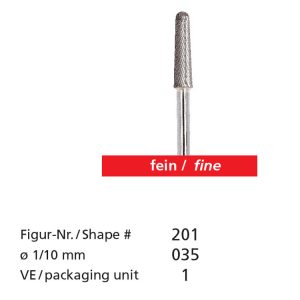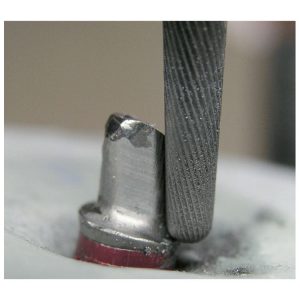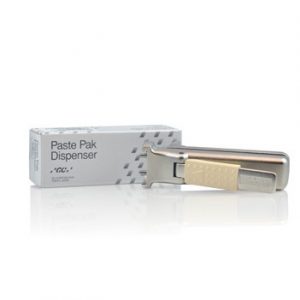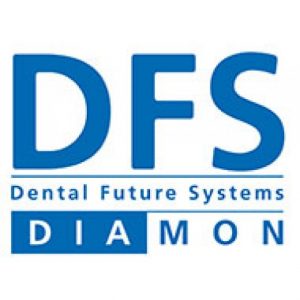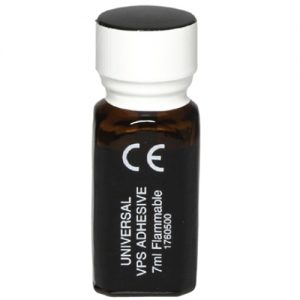Description
Whiteness HP AutoMixx is a 35% hydrogen peroxide bleaching get for vital teeth. It exclusive for in-office use, always with isolation for the protection of intraoral tissues. The bleacher comes in a double-body syringe containing the peroxide and the thickener in distinct compartments. By means of a self-mixing tip, the phases are mixed as they come out of the syringe, so that the product is ready for direct application on the teeth avoiding manual mixing.
KIT
- 1 double-body syringe with 5g of bleaching gel
- 5 self-mixing applicator tips
- 1 syringe with 2g of gingival barrier (Top dam)
- 3 applicator tips
- 1 bottle with 2g of peroxide neutralizing solution (Neutralize)
- 1 Instructions for Use
CHARACTERISTICS AND ADVANTAGES
Single application per session: the product may be kept up to 50 minutes in contact with the teeth with no need to change the gel, since the pH is remains neutral and stable during the whole session.
Practicality: the phases are mixed via a self-mixing tip and the product is released ready for application, with no need for manual manipulation.
Cost reduction: the remaining content can be stored and used later;
No light source required: it is not necessary to use accelerating light sources (LED systems, high power laser and others).
No color alteration: the product has bluish-green color and undergoes no color alteration during the process facilitating visual control.
Contains calcium: aiming to keep the enamel integrity during the bleaching process, a soluble calcium source was added to the formulation of the product. Studies show that calcium significantly improves the enamel micro hardness decay (an effect always observed during the bleaching process).
With heat blocker: in cases when the professional desires to use some sort of light source, the heat blocker avoids that the heat generated by these sources reach the pulp, preventing hypersensitivity.
Gel with adequate and pleasant viscosity.
Yield: the syringe yields up to 4 complete applications (smile line).
INDICATIONS
- Bleaching of vital teeth exclusively in office. It can be used with or without light source.
- Vital teeth darkened due to age.
- Vital teeth naturally darkened or yellowish.
- Vital teeth that were darkened or stained due to pigmented substances contained in products such as coffee, tobacco, tea, etc.
- Light and mild stains due to fluorosis
- Vital teeth with light degree of stain due to tetracycline
Note: It is important to note that the literature shows that in-office bleaching may result in less bleaching intensity and occasionally less color stability over time compared to the at-home technique, since in the later the contact time between the bleacher and the teeth is longer and more frequent. Literature data shows that the combined technique (in-office and at-home) has been effective in more resistant cases. For these reason, a very good interaction between the professional and the patient is necessary in relation to clarifications on expected results based on clinical pictures and the color scale. It is important also that the professional explains to the patient that his/her teeth have a saturation grade, and in some cases the bleaching results may be not the one the patient sees as ideal. Regarding hypersensitivity, it is important to note that the in-office bleaching technique, due to higher peroxide concentration, may present a higher degree of sensitivity compared to the ones used in the at-home technique (less peroxide concentration).
STEP BY STEP
1. Proceed with the prophylaxis of the teeth leaving the dental surface to be bleached free from biofilm. Take the color of the patient’s teeth by means of a shade guide and/or photograph before beginning the treatment.
2. After taking the colors, proceed to the insertion of the lip retractor (Arcflex, FGM) to facilitate access and manipulation of the buccal cavity. Then, apply Desensibilize KF 2% (FGM) for 10 minutes on the teeth to be bleached before starting.
3. Remove the desensitizing gel with water spray and dry up the gingival tissue. Make the relative isolation with Top dam (FGM) (light-curing gingival protector) covering the marginal gum and the papillae with a layer that is 3 to 5 mm wide and no thicker than 1 mm. The barrier should cover approximately 0.5 to 1 mm of the tooth surface. Use a clinical mirror observing from incisal to cervical if there is uncovered gingival tissue. If so, make the necessary correction. This stage is crucial to avoid contact of the peroxide with the gum. After application, light cure the Top dam (FGM) resin with 20 to 30 seconds of light curing for each group of 3 teeth. The gingival protector that is formed is rigid and insoluble, preventing occasional irritation by aggressive products.
4. With the self-mixing tip adequately coupled to the double-body syringe press the plunger gently until the phases (peroxide and thickener) are slowly mixed in the tip. A small amount of gel should be discarded in a disposable container before applying the product to the teeth. That will guarantee that the product applied on the teeth is correctly homogenized.
5. Apply the gel directly on the teeth to be bleached, normally from one 1st or 2nd pre-molar to the other. Cover the vestibular face of the teeth with the thinnest possible layer of gel, using the self-mixing tip itself to spread the product. The gel layer may be extended to the small area of the incisal/occlusal surface of the teeth. In case you want to use the light source, begin its use right after applying the gel. For each equipment, there is a specific time protocol for light exposure. Follow the instructions of the manufacturer for the duration of the light application, however, respect the protocol for the duration of the light exposure on the teeth as well.
6. After the application, the gel should be left in contact with the teeth for up to 50 minutes, period in which the professional should move the gel with an exploring probe or disposable micro applicator (e.g.: Cavibrush, FGM) to remove air bubbles and renew the contact of the gel with the teeth. There is no need to apply a new gel layer during the session.
7. At the end of the session, suck the gel with a fine suction tip and wash thoroughly. The removal of the gingival barrier may be carried out with an exploring probe or a similar instrument.
8. The polishing of the teeth with felt disks (e.g.: Diamond Flex, FGM) and polishing paste (e.g.: Diamond Excel, FGM) is recommended.
9. Office appointments should be scheduled with intervals of 7 days, allowing for the effective evaluation of the color of the teeth. If necessary, more bleaching sessions may be scheduled according to the steps described above. Generally, for good results, the suggestion is for 2 or 3 sessions for in-office bleaching.
Important Notes
1. To prevent occasional dental hypersensitivity during or after the treatment, Desensibilize KF2% (FGM) (5% potassium nitrate and 2% sodium fluoride) can be applied before the bleaching treatment, in a prophylactic way. The option of applying the desensitizer after the bleaching session is valid too, but may not show the same efficacy in some cases. In both cases (before or after the gel application), Desensibilize KF2% (FGM) may be applied on the teeth for 10 minutes. In cases of severe post session hypersensitivity, Desensibilize 0.2% (FGM) (for at-home use) can be applied by the patient for 10 minutes daily in a dental tray, until the symptoms disappear.
2. Monitor patients throughout the whole process in relation to hypersensitivity and possible soft tissue areas irritated by the peroxide. Fissures in the enamel or dentine exposure can lead to acute and intense pain. In those cases, it is recommended to interrupt the process and search for corrective treatment before resuming bleaching.
3. If the results obtained with the bleaching procedure do not fulfill patients’ expectations and patients do not show hypersensitivity or any other contraindication, the re-application of the product may be done in two more sessions, with a total of three sessions. In the need of one more session, a minimum interval of 7 days between sessions should be considered.


